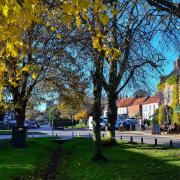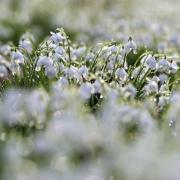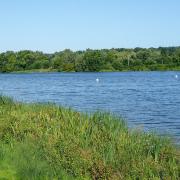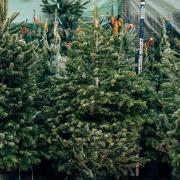This month sees the seasons changing and beautiful autumn colour arriving in abundance, with Norfolk’s countryside decked out in gorgeous reds and golds.

Autumn also marks the return of the National Trust’s annual walking festival, known as the Great British Walk, with a host of walking activities taking place across the county. The National Trust has lots of pretty walking routes to pick from – including trips through the gorgeous parkland of Blickling Estate, exploring the peaceful and pretty countryside lanes near Oxburgh Hall, and through some of the trust’s less well-known beauty spots like West Runton and Beeston Regis heaths.
Sheringham Park is famous for its vast collection of rhododendrons and azaleas, but it also has 1,000 acres of varying habitat, including woodland, parkland and cliff top, as well as being home to lots of wildlife, such as three species of deer and a wide variety of birds and butterflies.
Sheringham woodland and coastal walk
Begin at the National Trust visitor centre and walk past the bower before going down the hill and through some of the park’s beautiful woodland.
Leaving the park, cross over Weybourne Heath and walk down to Weybourne Station, then head into to Weybourne village, passing both the village church and the Ship Inn pub. Taking the road down to the sea you’ll soon arrive at Weybourne beach. Following the sandy path that rises up and along the cliff edge, you’ll be walking with pleasant sea views to your left.
Back in Sheringham Park, the route continues along the coast before turning back inland, taking you over the railway bridge and back up the incline towards the gazebo tower and its panoramic views – if you are lucky, you may even spot an old-fashioned steam train passing along the railway line.
Passing the front of Sheringham Hall, go up the hill to visit the temple before walking back to the visitor centre through fields and woods. Then it’s time for a welcome sit down and perhaps a treat from the café!
The walk is seven miles long (11 km) and takes about two-and-a-half hours. For full details of this and other great walks in Norfolk and beyond, visit the National Trust’s website where you can download them for free; www.nationaltrust.org.uk/article-1356394479859
Autumn’s array
Keith Zealand, head ranger at Sheringham Park, explains why we see such a beautiful array of colours during autumn.
Unlike last year’s hot and dry summer, when many leaves virtually “fried” on the trees before autumn, the weather this time was more evenly balanced between hot and humid. That means this autumn the colours may well be excellent if the other factors are favourable.
The colour change is caused by the trees beginning to cut off the flow of nutrients around their structure. As daylight shortens and average temperatures fall, the flow of nutrients becomes unsustainable for further growth and the tree seals off the leaf (on deciduous trees) from the twigs.
What happens next depends on the type of tree and the weather. Some trees hang on to many of their leaves, even when they are completely shrivelled after going through the colour change - beech and hornbeam, for example.
Most, though, go through a process of colouring slowly draining from green to a different colour that is characteristic for its species.
Lime, hazel and elm leaves nearly always just turn gradually yellow and fall but the tree retains a mottled appearance to the end, as whole leaves turn yellow while others remain wholly green. Beech usually goes yellow then copper-coloured before going brown.
The leaves of the field maple quickly turn to yellow all over and it stays as a completely yellow tree for some time - beautiful and very striking. Many of the foreign maples go orange or red (as does the native spindle tree) and some go purple.
Oddly, some individual trees completely ignore the process and remain bright green for weeks after everything else has dropped. It all adds to the diverse colours of the time of year.
The timing of leaf turn and fall is mainly dependent on temperature (including frost) and wind. Cold weather accelerates the process but once it starts, a mild spell may prolong it for a long time.
There comes a point, though, at which the joint between the leaf and the twig weakens enough for the wind to break it. Obviously, a strong wind will break stronger joints, so a windy autumn will shorten the time that the colour-change is seen on the trees but it will continue in the leaves on the ground.



























